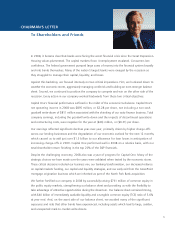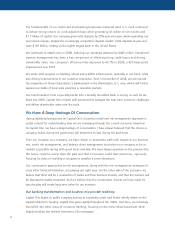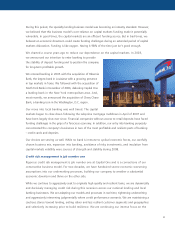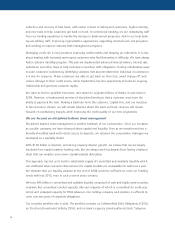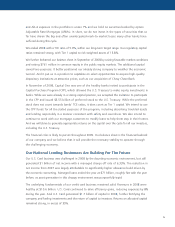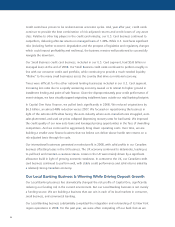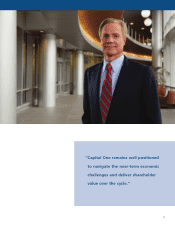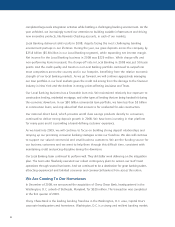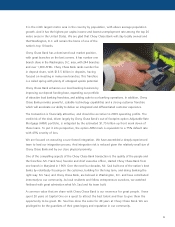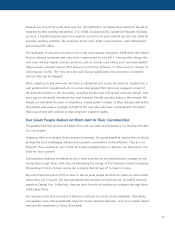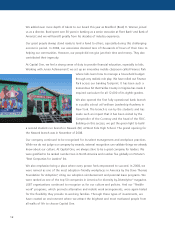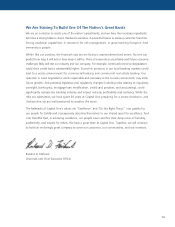Capital One 2008 Annual Report Download - page 5
Download and view the complete annual report
Please find page 5 of the 2008 Capital One annual report below. You can navigate through the pages in the report by either clicking on the pages listed below, or by using the keyword search tool below to find specific information within the annual report.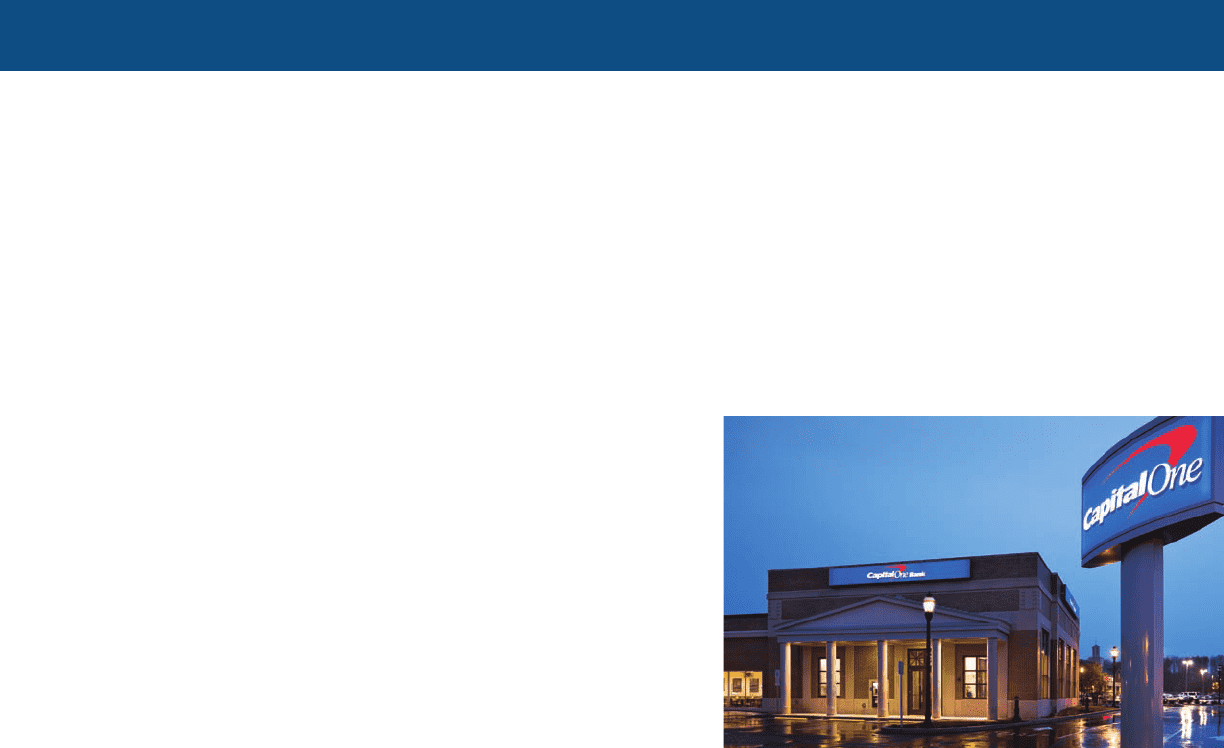
During this period, the specialty lending business model was becoming an industry standard. However,
we believed that this business model’s over-reliance on capital markets funding made it potentially
vulnerable. In good times, the capital markets are an efficient funding source. But in bad times, we
believed an economic downturn could create funding challenges during an extended period of capital
markets dislocation. Funding is like oxygen. Having it 98% of the time just isn’t good enough.
We charted a course years ago to reduce our dependence on the capital markets. In 2003,
we announced our intention to enter banking to provide
the stability of deposit funding and to position the company
for long-term profitable growth.
We entered banking in 2005 with the acquisition of Hibernia
Bank, the largest bank in Louisiana with a growing presence
in top markets in Texas. We followed with the acquisition of
North Fork Bank in December of 2006, delivering Capital One
a leading bank in the New York metropolitan area. And,
most recently, we announced the acquisition of Chevy Chase
Bank, a banking icon in the Washington, D.C. region.
Our move into local banking was well timed. The capital
markets began to close down following the subprime mortgage meltdown in April of 2007 and
have been largely shut ever since. Financial companies without access to retail deposits have faced
funding challenges in the grips of a ferocious economy. In addition, our entry into banking purposely
concentrated the company’s businesses in two of the most profitable and resilient parts of banking
– credit cards and deposits.
Our choices are serving us well. While no bank is immune to cyclical economic forces, our carefully
chosen business mix, expansion into banking, avoidance of risky investments, and insulation from
capital markets volatility were sources of strength and stability during 2008.
Credit risk management is job number one
Rigorous credit risk management is job number one at Capital One and is a cornerstone of our
conservative business model. For two decades, we have hardwired severe economic worsening
assumptions into our underwriting processes, building our company to weather a substantial
economic downturn and thrive on the other side.
While we continue to aggressively seek to originate high quality and resilient loans, we are dynamically
and decisively managing credit risk during this recession across our national lending and local
banking businesses. We are adapting our models and processes in real time, tightening underwriting
and aggressively intervening judgmentally where credit performance warrants. We are maintaining a
cautious stance toward lending, exiting riskier and less resilient customer segments and geographies
and selectively increasing price to build resilience. We are continuing our intense focus on the
3



